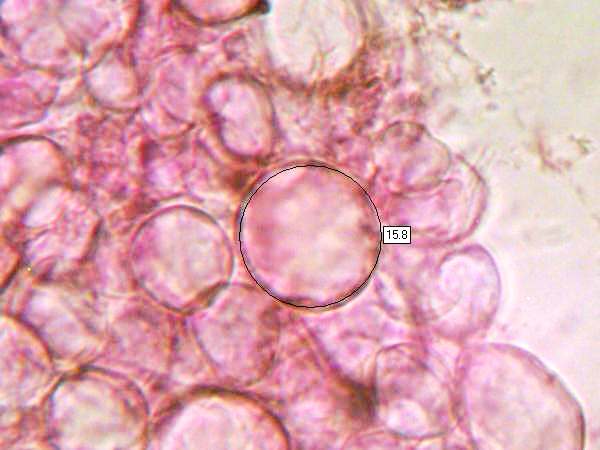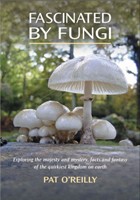Russula fragilis var. fragilis (Pers.) Fr. - Fragile Brittlegill
Phylum: Basidiomycota - Class: Agaricomycetes - Order: Russulales - Family: Russulaceae
Distribution - Taxonomic History - Etymology - Identification - Culinary Notes - Reference Sources
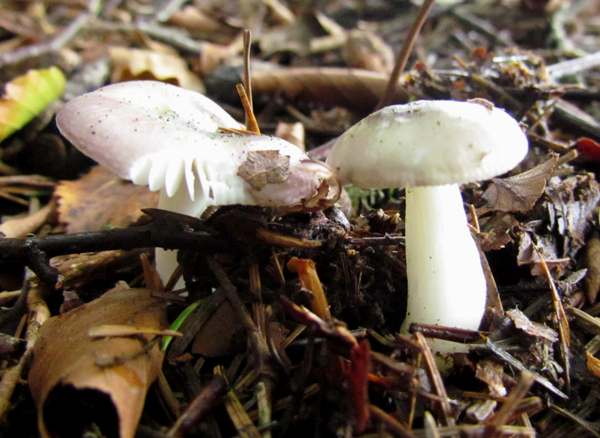
Russula fragilis, the Fragile Brittlegill, is a small and extremely crumbly mushroom with a relatively long stem. In appearance this is a very variable brittlegill: its cap colour can be pink, violet, purple or white, often including a central region tinged with green, yellow and brown. The variety Russula fragilis var. nivea is all white.
Finding an undamaged specimen of this delicate mushroom is far from easy, even though this is a commonly occurring woodland species.
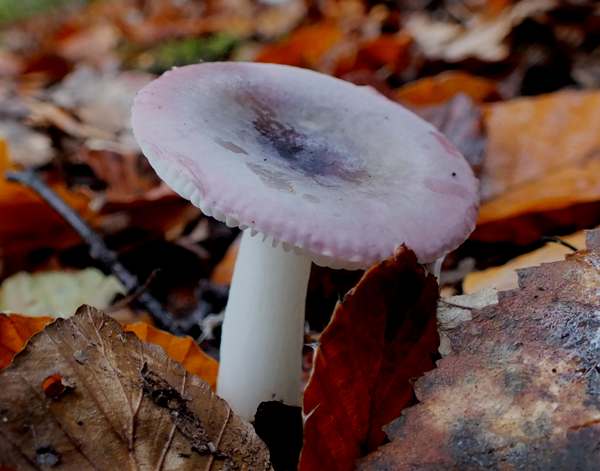
Distribution
This little brittlegill is widespread and very common in Britain and Ireland as well as in other European countries. Its range extends into temperate regions of Asia, and this species is also recorded in parts on North America.
Taxonomic history
Russula fragilis was described in 1801 by Christian Hendrik Persoon, who gave it the binomial scientific name Agaricus fragilis. (Most gilled fungi were initially placed in a giant Agaricus genus, but the majority have since been redistributed across several other newer genera leaving only what are commonly referred to as the 'true mushrooms' in the genus Agaricus.) In 1838 the Fragile Brittlegill was transferred to the Russula genus by the great Swedish mycologist Elias Magnus Fries, whereupon its scientific name became Russula fragilis.
Synonyms of Russula fragilis include Agaricus fallax Schaeff., Agaricus fragilis Pers., Agaricus linnaei var. fragilis (Pers.) Fr., Russula bataillei Bidaud & Reumaux, Russula emetica ssp. fragilis (Pers.) Singer, Russula emetica var. fragilis (Pers.) Quél., and Russula fragilis var. fallax (Schaeff.) Massee.
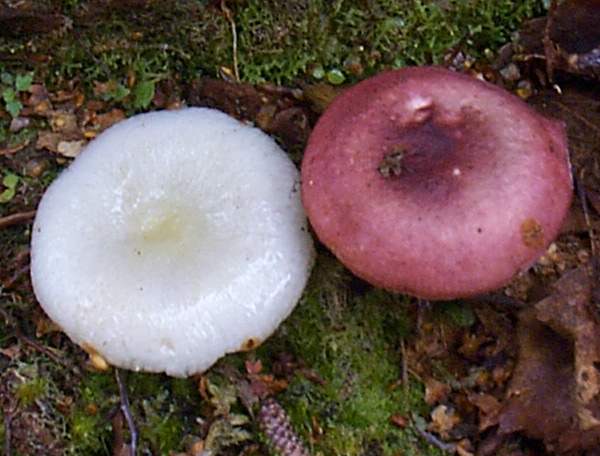
Etymology
Russula, the generic name, means red or reddish, and indeed many of the brittlegills have red caps (but many more are not, and several of those that are usually red can also occur in a range of other colours!). The specific epithet fragilis means fragile, of course, and indeed this just has to be one of the most brittle of brittlegills!
Identification guide
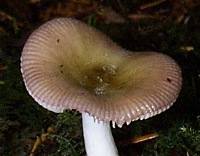 |
Cap2 to 6cm diameter, often noticeably grooved at the margin, the caps are initially convex, then expanding and becoming depressed. Very brittle. Most are violaceous or purple, darker in the centre and sometimes taking on a green tinge when old. The cap flesh white. (A pure white variety, var. nivea is also fairly common.) |
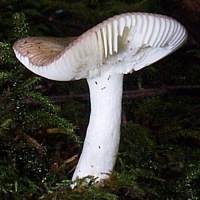 |
GillsThe very brittle gills are adnate, white or pale cream, with toothed edges. (This latter feature is only visible with a magnifying glass.) Stem2 to 6cm long and 5 to 10mm in diameter, the stems are white, sometimes tinged yellow near the base. The slightly swollen base is particularly brittle. The white flesh of the stem crumbles very easily. |
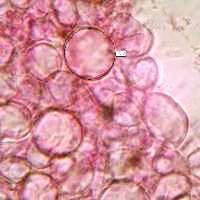 |
SphaerocyctsThe brittle flesh contains spherical cells known as sphaerocycts. |
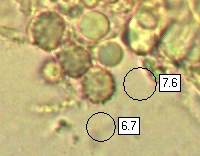 |
SporesGlobose (almost spherical), 7.5-9 x 6-8µm; ornamented with warts up to 0.5µm tall connected by fine lines to form an almost complete network. Spore printWhite. |
Odour/taste |
Slight fruity odour; acrid taste. |
Habitat & Ecological role |
In broadleaf woodland and sometimes also in coniferous woodland, preferring damp, well shaded places; usually scattered rather than in large groups. In common with other members of the Russulaceae, Russula fragilis is an ectomycorrhizal mushroom. |
Season |
August to October in Britain and Ireland. |
Similar species |
Russula atropurpurea, the Purple Brittlegill, is much larger with a very dark, almost black cap centre and pale cream gills; its stem base is rusty brown. |
Culinary Notes
The Fragile Brittlegill is bitter tasting and generally considered to be inedible.
Reference Sources
Pat O'Reilly (2016). Fascinated by Fungi, First Nature Publishing
Geoffrey Kibby (2011).The Genus Russula in Great Britain, published by G Kibby.
Roberto Galli (1996). Le Russule. Edinatura, Milan.
Paul M. Kirk, Paul F. Cannon, David W. Minter and J. A. Stalpers. (2008). Dictionary of the Fungi; CABI.
Taxonomic history and synonym information on these pages is drawn from many sources but in particular from the British Mycological Society's GB Checklist of Fungi.
Fascinated by Fungi. Back by popular demand, Pat O'Reilly's best-selling 450-page hardback book is available now. The latest second edition was republished with a sparkling new cover design in September 2022 by Coch-y-Bonddu Books. Full details and copies are available from the publisher's online bookshop...
